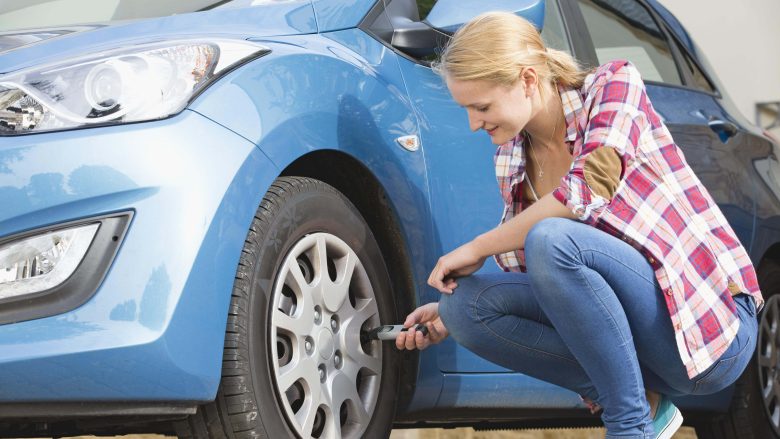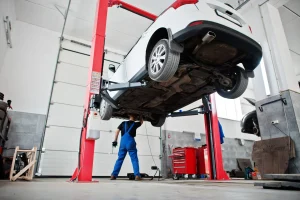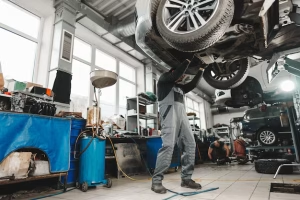Car maintenance can seem overwhelming, especially if you have no prior experience working on vehicles. However, with the right approach, anyone can learn the basics of DIY car repair. Simple repairs and regular maintenance tasks are often straightforward and can save you both time and money. This beginner’s guide is designed to walk you through the essential steps to get started with car maintenance and repair, helping you keep your vehicle in top condition without the high cost of professional mechanics.
Understanding the Basics of Car Maintenance
Before diving into DIY car repair, it’s important to understand the basics of car maintenance. Routine maintenance is crucial for keeping your vehicle running smoothly and preventing costly repairs down the road. Regularly checking and maintaining fluids, tires, brakes, and other essential components can help you catch small issues before they become major problems. Learning how your car works and developing a regular maintenance schedule are essential first steps toward becoming a DIY car repair expert.
Essential Tools for Beginners
The right tools are essential for any DIY car repair. Fortunately, you don’t need a vast array of equipment to get started. A basic toolkit should include:
- Wrenches and socket sets
- Screwdrivers (flathead and Phillips)
- A jack and jack stands
- Pliers and a tire iron
- A torque wrench
- An oil filter wrench
- A funnel for adding fluids
These tools will help you complete most basic car maintenance tasks and repairs. As you gain experience, you can expand your toolkit to include more specialized tools for advanced repairs. However, these basics will allow you to tackle most common problems effectively.
Regular Oil Changes
One of the easiest and most important car maintenance tasks is changing the oil. Fresh oil is essential for lubricating the engine, preventing overheating, and reducing wear. Most vehicles require an oil change every 3,000 to 5,000 miles, depending on the make and model.
To change the oil, you’ll need to raise the car using a jack, remove the oil drain plug, and allow the old oil to drain into a pan. After that, replace the oil filter, and refill the engine with fresh oil. Be sure to use the correct type of oil for your vehicle, which can be found in your car’s owner’s manual. Changing your oil yourself can save you money and keep your engine running smoothly.
Checking and Maintaining Tire Pressure
Tire pressure plays a significant role in the safety, performance, and fuel efficiency of your car. Under-inflated tires can cause poor handling, excessive tire wear, and reduced fuel economy, while over-inflated tires can lead to blowouts. Regularly checking your tire pressure is simple and can help extend the life of your tires.
To check the tire pressure, use a tire pressure gauge, which is available at most auto parts stores. Simply remove the valve cap, place the gauge over the valve stem, and check the reading. If the pressure is too low, add air until it reaches the recommended level (you can find this information in your owner’s manual or on the driver’s side door frame). Keeping your tires properly inflated is a quick and easy task that can significantly impact your car’s overall performance.
Replacing Wiper Blades
Wiper blades are a crucial safety feature, ensuring that you can see clearly during rain or snow. Over time, the rubber on wiper blades can wear out, leaving streaks or making noise as they move across the windshield. Replacing wiper blades is an easy task that takes just a few minutes.
To replace the blades, lift the wiper arm off the windshield and remove the old blade. Most wiper blades snap in place, so simply detach the old ones and snap in the new set. Be sure to check the size of the blades for your specific make and model, which can be found in your car’s manual or by consulting the replacement packaging. Regularly changing wiper blades ensures clear visibility during poor weather conditions, improving your driving safety.
Replacing Air Filters
Air filters help prevent dirt and debris from entering your engine and keep the air intake clean. Over time, the air filter can become clogged, which can reduce engine performance and fuel efficiency. Replacing the air filter is a simple and inexpensive task that can improve the overall health of your engine.
To replace the air filter, locate the air filter housing under the hood. It’s usually easy to access and requires no special tools. Open the housing, remove the old filter, and replace it with a new one. Depending on your car’s make and model, this process can take as little as five to ten minutes. By maintaining a clean air filter, you can ensure that your engine operates at peak performance.
Changing a Flat Tire
Learning to change a flat tire is one of the most valuable car repair skills you can acquire. A flat tire can happen at any time, but knowing how to handle it can save you from waiting for a tow truck or roadside assistance.
To change a flat tire, first, find a safe, level location to park your car. Use the jack to lift the car off the ground, and then use a tire iron to loosen the lug nuts. Remove the flat tire and replace it with the spare, tightening the lug nuts in a criss-cross pattern. Lower the car, and double-check the tire to ensure it’s secure before driving. Carrying a spare tire, jack, and tire iron in your car is a good idea in case of emergencies, and learning how to perform this repair will help you stay independent on the road.
Checking and Replacing Brake Pads
Brakes are one of the most critical components of your vehicle, and regular inspection is vital for your safety. Over time, brake pads wear down and need to be replaced. While brake pad replacement can be a more advanced task, it’s still manageable for beginners with a bit of practice.
To check the brake pads, remove the wheel and inspect the thickness of the pads. If the pads are worn down to less than ¼ inch, it’s time for a replacement. To replace them, you’ll need to remove the caliper, take out the old pads, and install the new ones. Brake pad replacement can be a bit tricky, but with clear instructions and the right tools, it’s achievable for a beginner.
Keeping Your Battery in Check
A dead car battery can leave you stranded, so it’s important to check the battery regularly for signs of wear. A battery should be free of corrosion and securely fastened. If your car struggles to start, or if the battery is more than three years old, it may be time for a replacement.
To check the battery, use a multimeter to measure its voltage. If the reading is below 12.6 volts, the battery may need to be replaced. To replace the battery, disconnect the negative terminal first, then the positive terminal, and remove the old battery. Install the new battery, reconnect the terminals, and make sure it’s securely in place. Keeping your battery in good condition helps avoid unexpected issues and ensures reliable starts.
Conclusion
DIY car repair may seem intimidating at first, but with the right tools and knowledge, you can handle many common maintenance tasks on your own. From oil changes to tire rotations and brake inspections, learning how to care for your car not only saves money but also gives you the confidence to tackle more complex repairs as you gain experience. By following this beginner’s guide and regularly maintaining your vehicle, you’ll keep your car running smoothly and enjoy the satisfaction of knowing you can handle basic car repairs yourself.



